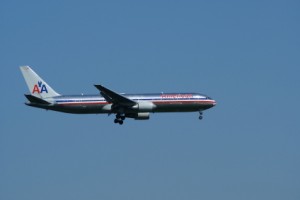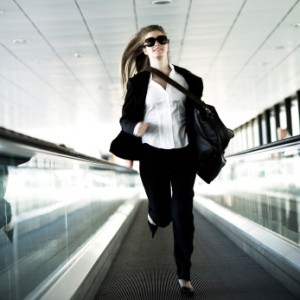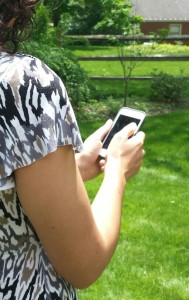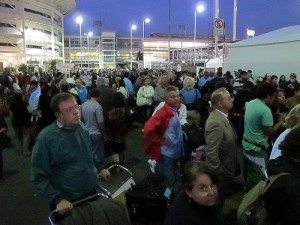 Ben Franklin once said, “Constant complaint is the poorest sort of pay for all the comforts we enjoy”. As a travel professional, and avid traveler myself the susceptibility to hear or have to manage any myriad of complaints can be mind boggling. One of Amazing Journeys’ mantras is “don’t sweat the small stuff” – a statement reminded to folks more often than need be. In the world of travel it’s true that 10% of the people cause 90% of the problems but to those 10% I proclaim; really?…..is it THAT bad?? I don’t think so. Actually, I know so!
Ben Franklin once said, “Constant complaint is the poorest sort of pay for all the comforts we enjoy”. As a travel professional, and avid traveler myself the susceptibility to hear or have to manage any myriad of complaints can be mind boggling. One of Amazing Journeys’ mantras is “don’t sweat the small stuff” – a statement reminded to folks more often than need be. In the world of travel it’s true that 10% of the people cause 90% of the problems but to those 10% I proclaim; really?…..is it THAT bad?? I don’t think so. Actually, I know so!
If you are a good seasoned and appreciative traveler, you know that the differences in the people you meet, the delayed flights, uncontrollable factors like weather and lost luggage, perhaps that cow that just laid down on the road delaying your route, or the last minute tax that the local government has imposed…..are all part & parcel in the world of travel. And honestly, didn’t you go on vacation to experience something “different” than what you have at home day after day? If you wanted the same comforts as home, the same food, the same weather, the same greetings….the same mundane routine that embodies familiarity…..then stay home and get that. But if you want to have a vacation (in other words, to “vacate” from the routine)…don’t just hope for it, expect it and embrace ALL the wonderful, amazing, unplanned differences that will come your way.
Here is a little perspective on just how unjustified our griping can be, and just how good we really have it. Think about these; and then ask yourself if you really want your travels to be different from how they are (….be careful what you wish for; things could be a lot worse):
 Travel fees – Add-on fees for travel have proliferated into a dizzying array of charges, surcharges, add-ons and premiums that boost air-travel costs. Here’s why: Average airfares are roughly half what they were when the government controlled prices and a plane ticket included all the amenities for which airlines now charge. Airlines don’t do that because they are greedy. They add on fees in order to stay in business. The average profit margin for an airline worldwide was 0.6 percent in 2012. Compare that with much-admired industries, such as consumer electronics, where profit margins are 40 percent.
Travel fees – Add-on fees for travel have proliferated into a dizzying array of charges, surcharges, add-ons and premiums that boost air-travel costs. Here’s why: Average airfares are roughly half what they were when the government controlled prices and a plane ticket included all the amenities for which airlines now charge. Airlines don’t do that because they are greedy. They add on fees in order to stay in business. The average profit margin for an airline worldwide was 0.6 percent in 2012. Compare that with much-admired industries, such as consumer electronics, where profit margins are 40 percent.
Airport security protocol – See that long line through security? The grunts and groans in this wing of any airport can be heard in multitude almost every hour. It’s the airport’s fault though, that you didn’t plan ahead better. Did you read the information provided to you about the recommended arrival time? Have you not been to an airport before? You were gambling, though, weren’t you? Admit it – you knew the line could be long, but you took a chance and lost. But, its not your fault; it’s the airport’s fault for having a system of security and safety that leads itself to you being late. Yeah…blame it on the airport. And then, just remember a little healthy perspective: according to the TSA 99% of air travelers actually spend less than 20 minutes going through security. Now….plan your next trip accordingly.
Mean TSA officers – In December 2011 the TSA received a total of 320 customer complaints about agent courtesy — only 0.0005 percent of all air-travel passengers that month.
Kids on planes – What can be worse than being stuck in the back of a plane with an unhappy 3-year-old bawling? Yes, every once in a while a child disrupts the alleged serenity of a plane, but the overwhelming majority of parents do a great job keeping their babies and toddlers peaceable for most of the flight. What are parents supposed to do- leave the kids home alone? More often than not, it’s adults who cause the most disruption.
 Long flights – This one is my favorite! “Oh, that long, long haul from New York to Shanghai – it’s brutal!” Just terrible: 12 hours sitting in a temperature-controlled, cushioned seat while you watch movies, nap, people wait on you, and you pass across the planet far above storms and other earthly obstacles. A century ago, that same journey took at a month, cramped on a motion-sickness inducing bitterly cold or oppressively hot, dirty vessel. Instead, you can now get from New York to LA in four hours, or from one continent to the next in less time that it would take you to drive from Miami to Dallas. Our modern ability to wing around the world in comfort is nothing short of a miracle. Stop Complaining!!!
Long flights – This one is my favorite! “Oh, that long, long haul from New York to Shanghai – it’s brutal!” Just terrible: 12 hours sitting in a temperature-controlled, cushioned seat while you watch movies, nap, people wait on you, and you pass across the planet far above storms and other earthly obstacles. A century ago, that same journey took at a month, cramped on a motion-sickness inducing bitterly cold or oppressively hot, dirty vessel. Instead, you can now get from New York to LA in four hours, or from one continent to the next in less time that it would take you to drive from Miami to Dallas. Our modern ability to wing around the world in comfort is nothing short of a miracle. Stop Complaining!!!
Sick people traveling – Epidemiologists will tell you that you’re just as likely to catch a cold from a trip to the grocery store, the movies, a bus ride, a restaurant, work or school as on a plane. Would it be nice if travelers who’ve come down with a cold do their best to curb their emissions — take medicines for symptomatic relief, cover their mouths when they cough or sneeze, maybe even wear a mask? Sure. Most do exactly that.
First-class upgrades – Folks, the people in first class have paid for their seats, either outright with a 300 percent premium — or more — over the price you paid, or by devoting their ongoing travel costs to one airline so they gain elite status in the carrier’s frequent-flier program. The first-class seat is a reward for customer loyalty.
Canceled flights – Did you realize that less than 2 percent of all the flights in the US are cancelled? And even that figure is high, based on a December 2012 report; a winter month. Of all the travel complaints, this may be the least understandable. Do you really want to trust fate on a plane with an unsolved mechanical issue or in bad weather? As a famous Beatle once said, “Let it be”.
Phone restrictions – Even though many say it’s nonsense that phones and other electronic devices might interfere with pilot communications, that’s not what pilots say. Isn’t it just a bit therapeutic to be offline for the few hours of your flight? If you still pine for your phone, consider this. If it ever becomes ok for you, it becomes ok for everyone. Imagine your loudmouth seatmate chatting incessantly all the way from Baton Rouge to Tacoma while you’re trying to nap or read your work report. Better safe than sorry, in this case.
 Expensive airfares – Playwright Oscar Wilde said, “Everybody knows the price of something, but nobody knows the value.” In this case, most people know neither. Inside the U.S., airfares adjusted for inflation are less than half what they were three decades ago, and have been declining almost every single year. The average inflation-adjusted airfare in 1980 was more than $600; in 2011, it was $360 (including fees). Cost per mile: 32 cents 1980, 16 cents now.
Expensive airfares – Playwright Oscar Wilde said, “Everybody knows the price of something, but nobody knows the value.” In this case, most people know neither. Inside the U.S., airfares adjusted for inflation are less than half what they were three decades ago, and have been declining almost every single year. The average inflation-adjusted airfare in 1980 was more than $600; in 2011, it was $360 (including fees). Cost per mile: 32 cents 1980, 16 cents now.
Not convinced? Here’s a real-time comparison for travel between San Francisco and New York. By plane, it costs approximately $400. By car, $1,480. By train, $285.
 Your mobile boarding pass should always be a tap or two away from your home screen. You’ve got a link to it in your email or your texts, or you’re sure you put it into Apple Wallet. But should isn’t always good enough when you get up to the TSA desk and the airport’s wifi is flaking out. Always take a screenshot.
Your mobile boarding pass should always be a tap or two away from your home screen. You’ve got a link to it in your email or your texts, or you’re sure you put it into Apple Wallet. But should isn’t always good enough when you get up to the TSA desk and the airport’s wifi is flaking out. Always take a screenshot.





 -by Erin
-by Erin












